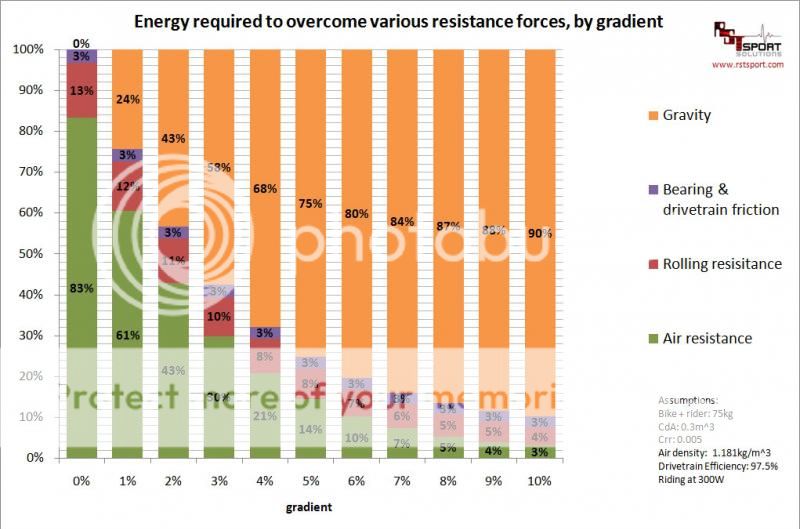Hi everyone. 
I know that I might look a bit dumb or stupid for some, especially with the fact that I'm here for quite a bit of time, but I've never understood one cycling mechanic - because I don't figure out how it can work.
I don't understand how the fact that having someone in front can help to climb easier - aka "wheelsucking".
I know there is a relation towards air penetration, that the guy in front has more air resistance, but considering in climbs the average speed is around 20 km/h, the strength needed to overcome air resistance is nearly negligible compared to the strength needed to propel the body and the bike in a steep slope. It's way different on flat surfaces as the speed can reach 60 km/h, a speed where the air resistance is much more important, and you don't need to "fight against gravity".
There might be a "psychological" thing into it, thinking "I can follow him" that can help, but if the legs can't keep up, that won't last far. Otherwise we'd have massive sprints all the time at the end of 200-km long stages with MTF.
So if someone can explain to me how this works, because this simply bugs my mind. Thanks!
I know that I might look a bit dumb or stupid for some, especially with the fact that I'm here for quite a bit of time, but I've never understood one cycling mechanic - because I don't figure out how it can work.
I don't understand how the fact that having someone in front can help to climb easier - aka "wheelsucking".
I know there is a relation towards air penetration, that the guy in front has more air resistance, but considering in climbs the average speed is around 20 km/h, the strength needed to overcome air resistance is nearly negligible compared to the strength needed to propel the body and the bike in a steep slope. It's way different on flat surfaces as the speed can reach 60 km/h, a speed where the air resistance is much more important, and you don't need to "fight against gravity".
There might be a "psychological" thing into it, thinking "I can follow him" that can help, but if the legs can't keep up, that won't last far. Otherwise we'd have massive sprints all the time at the end of 200-km long stages with MTF.
So if someone can explain to me how this works, because this simply bugs my mind. Thanks!








